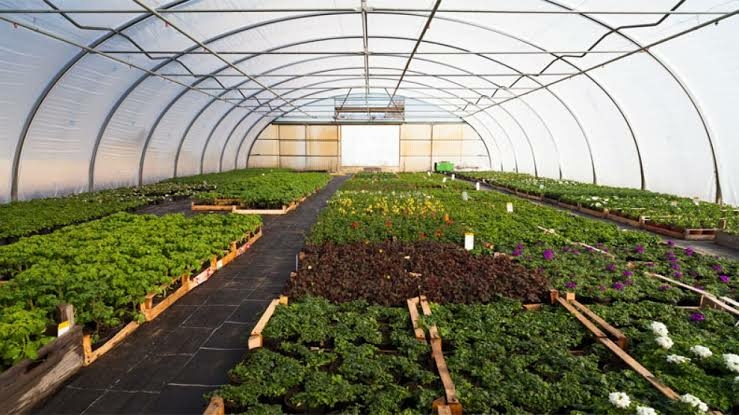According to Mr Rufus Durodoye, Product Development Department, Nigeria Export Promotion Council (NEPC), internally displaced persons (IDPs) and refugees can improve food security in Nigeria by using the greenhouse mechanism.
On Tuesday in Abuja, Durodoye delivered an online presentation on Journalist Go Organic, a Pan African initiative.
Agriculture, he believes, has the potential to promote the economic and social integration of migrants, asylum seekers, and refugees while also increasing the value chain.

“In developed countries, sectors such as agriculture, tourism, and health care have become largely dependent on migrants, significantly contributing to local economic development that benefits both host communities and refugees.”
“Many refugees come from rural areas where they have valuable agricultural skills as crop growers, livestock keepers, or fishermen.”
“With the right support and assets, they have the potential not only to feed themselves and their families, but also to enter and prosper in lucrative markets,” he said.
According to him, greenhouse mechanised farming has the potential to transform rural Nigeria’s agricultural sector by achieving food security, increasing incomes, and creating new job opportunities.
According to the News Agency of Nigeria (NAN), a greenhouse or screenhouse is a structure with walls and a roof made of transparent but durable materials, such as glass or plastic, where plants that require regulated climatic conditions are grown.
A screenhouse is what we found in Nigeria and other African countries; it is appropriate for temperate regions where the weather is favorable for plant growth.
Durodoye noted that it was called a screenhouse because the weather issue had been resolved, “leaving us with dust, insects, pests, and unwanted humans and animals from entering the kit.”
“Inside the Greenhouse, we have gadgets/equipment such as heaters, coolant, fans, and so on to regulate the temperature into the standard required for your plants; this type of Greenhouse is found in Europe, Asia, and America, among other places.”
“It comes in a variety of sizes, including 5m x 5m, 5m x 10m, 24m x 24m, and 24m x 48m, depending on your strength.” Non-availability of land is not an excuse for a Screenhouse of 24m x 48m if you are certain of 600 stands of plants you want to go into. You can do this in your backyard or on your balcony.
“One thing they have in common is that they both have the same structure,” he said. “With a small land area and management of limited resources, one can harvest huge production, alleviate hunger, and be a good source of family income.”
Tomatoes, harbanero pepper, golden sun, green pepper, cucumber, vegetables, and yam are among the food crops that thrive in a greenhouse farm, according to NAN.

















Discussion about this post